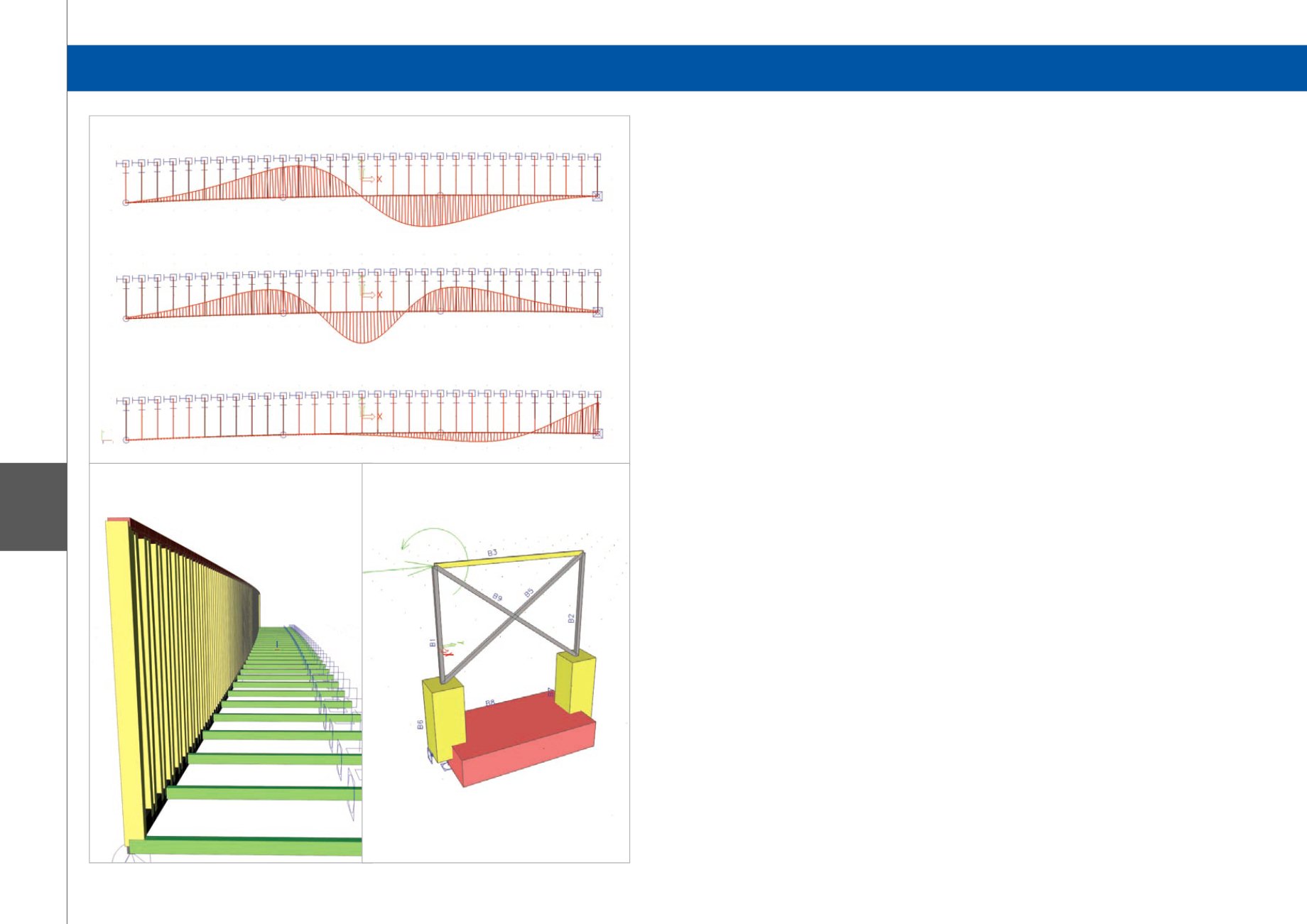
146
X2
Category 2: Civil Structures
Programme
Architectural project and stability study.
Context
The Smedenpoort (“The Gateway of the Blacksmiths”),
one of the four remaining heritage-listed gateways of
the City of Bruges, and built in the 13th century, became
a bottleneck. The gateway was too narrow to allow
for a fluid traffic of cars, pedestrians and cyclists. The
City of Bruges decided, under the supervision of the
Commission for Monuments and Landscapes, to add
new footbridges on both sides of the existing heritage
monument.
Project description
The two footbridges have a width of 2.5 m. The overall
lengths are 62.6 m for the southern footbridge and
57.2 m for the northern footbridge, with the radius being
253.5 m. Except for the position of the abutments and
bracings, the two bridges are identical. The effective
spans are reduced to 5 m between each supporting
column, which corresponds with the spans of the
existing bridge across the fortification canal.
The new footbridges had to respect the strong historic
presence of the surroundings. The path has been
conceived as an element that embraces the existing
bridge and gateway, offering respect to the old
monument.
The structure is constructed with weathering steel and
the walking surface is made of prefabricated concrete
tiles. The use of steel bars instead of hollow sections
and the used details refer to handcraft.
The structural elements have a reduced dimension due
to the large number of supports and the structural use
of the railing. This results in a filigree structural design,
with the railing a mix of a Warren truss and a Vierendeel
truss. The pattern of the vertical bars of the railing is
developed according to the internal forces in the truss,
optimising the material use. The horizontal stiffness is
provided by the bridge deck forming an arched lattice,
with the concrete tile work as compression struts.
Structural analysis
For the bridge calculation, the choice was to split
the three-dimensional structure into two-dimensional
pieces, on the one hand to simplify the modelling, and
on the other hand to maximise the direct insight into the
results. This split was made possible by the structural
concept and the connection between the different
elements.
A first model consisted of three spans of the structural
railing. In addition to this, models were made for
an individual column, the abutments with bracings,
the cross-beam and the concrete tile. To enable the
checking for instability of the structural railing, the
first 2D-model was extended to 3D with half of the
crossbeams and other supporting conditions applied.
Finally, another 2D-model to check the horizontal
stability of the bridge deck structure was made with the
bridge deck consisting of cross-beams and concrete
tiles.
Modelling with different small calculation models
allows for a good insight but requires a good exchange
of reaction forces and supporting conditions. The
‘Productivity toolbox’ functionality proved to be very
useful for this project. Calculation results (such as
internal forces) for the different models were exported
in numerical values, so that they could be combined to
make a global envelope or imported afterwards as loads
in the other models. ‘General Cross Section’ was used
to model the steel handle with the reservation for the
integrated Led-line.
Due to the slenderness of the whole structure, the
railing had to be checked for buckling and the bridge
deck (an arch in the horizontal plan) for pedestrian-
induced vibrations. Therefore, the stability was
analysed with the ‘Stability analysis’ functionality. A
modal analysis was carried out using the ‘Dynamics’
functionality. A good estimation of the supporting
stiffnesses was essential.
Footbridges of the “Smedenpoort” - Brugge, Belgium
Software: Scia Engineer
Stability combination S1, Buckling mode 1
Stability combination S1, Buckling mode 2
Stability combination S5, Buckling mode 1


